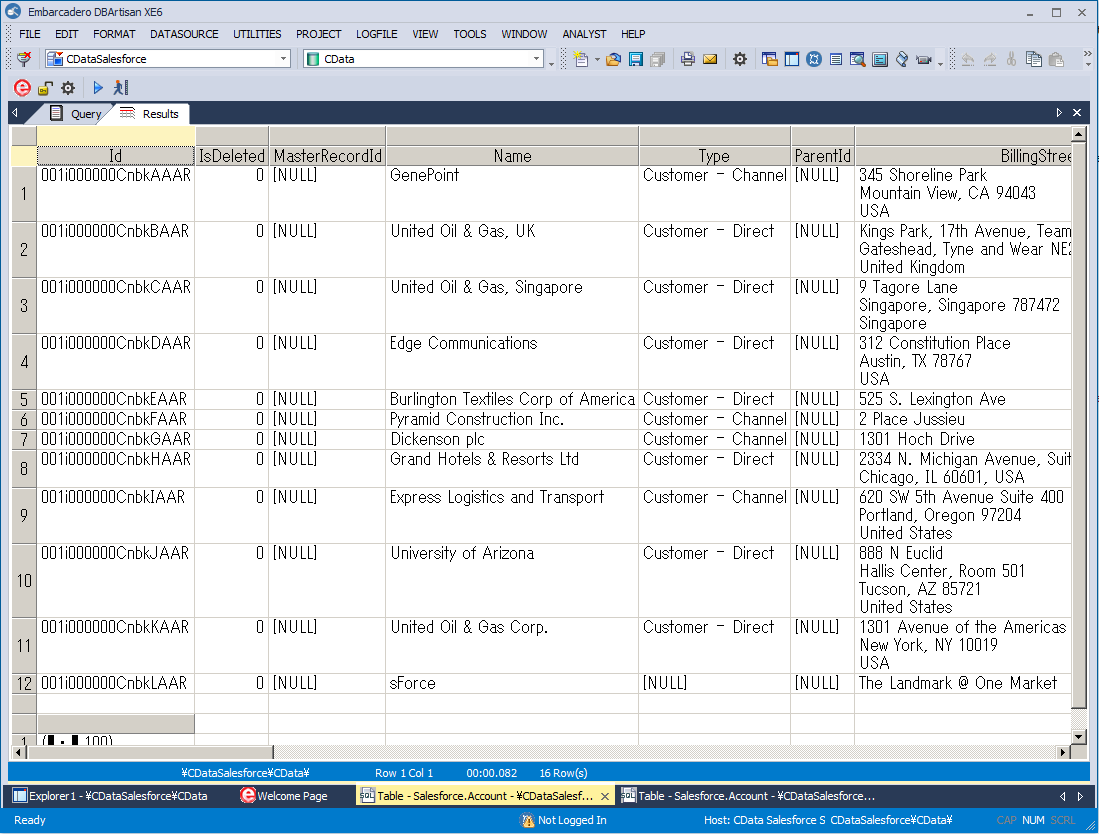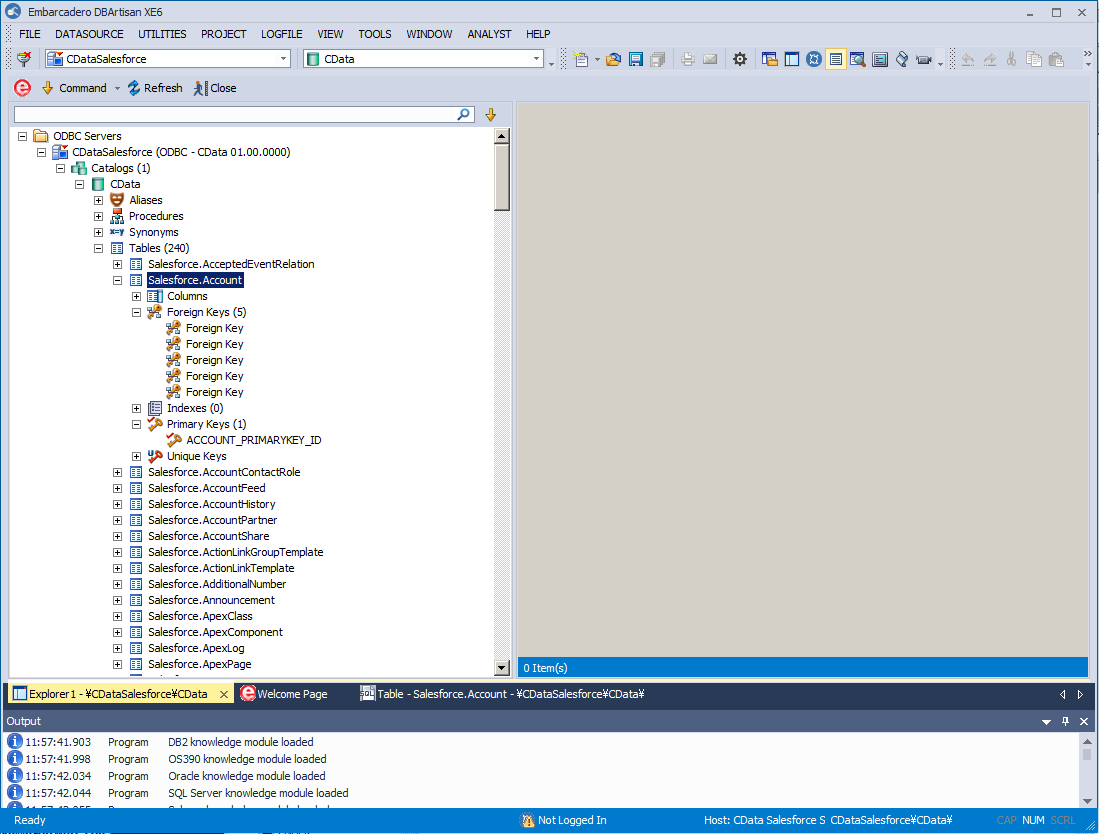Discover how a bimodal integration strategy can address the major data management challenges facing your organization today.
Get the Report →Connect to Asana Data in DBArtisan
Use wizards in DBArtisan to configure Asana data as a data source.
The CData ODBC Driver for Asana seamlessly integrates Asana data into database management tools like DBArtisan by enabling you to access Asana data as a database. This article shows how to create an data source for Asana in DBArtisan and execute queries. You can then edit data visually and execute standard SQL.
Integrate Asana Data into DBArtisan Projects
If you have not already, first specify connection properties in an ODBC DSN (data source name). This is the last step of the driver installation. You can use the Microsoft ODBC Data Source Administrator to create and configure ODBC DSNs.
You can optionally set the following to refine the data returned from Asana.
- WorkspaceId: Set this to the globally unique identifier (gid) associated with your Asana Workspace to only return projects from the specified workspace. To get your workspace id, navigate to https://app.asana.com/api/1.0/workspaces while logged into Asana. This displays a JSON object containing your workspace name and Id.
- ProjectId: Set this to the globally unique identifier (gid) associated with your Asana Project to only return data mapped under the specified project. Project IDs can be found in the URL of your project's Overview page. This will be the numbers directly after /0/.
Connect Using OAuth Authentication
You must use OAuth to authenticate with Asana. OAuth requires the authenticating user to interact with Asana using the browser. See the "Getting Started" chapter of the help documentation for a guide to using OAuth.
You can then follow the steps below to register Asana data as a database instance in your project:
- In DBArtisan, click Data Source -> Register Datasource.
- Select Generic ODBC.
- Enter a name for the data source and select the DSN.
![The DSN of the data source to be registered. (Salesforce is shown.)]()
- Finish the wizard to connect to Asana data. Asana entities are displayed in the Datasource Explorer.
![The Datasource Explorer. (Salesforce is shown.)]()
You can now work with Asana data as you work with any other database. See the driver help documentation for more information on the queries supported by the Asana API.








